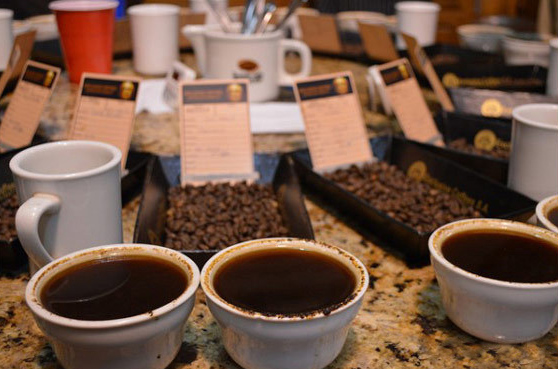Taste mellow, neutral Brazilian coffee flavor manor production area introduction
Pakistan came to power in a military coup in 1964 and changed its name to the Federative Republic of Brazil in 1967. In March 1985, the junta returned power to the people. On November 15, 1989, Pakistan held its first national direct election in nearly 30 years, and Fernando Collor was elected president. On December 29th, President Collor was forced to resign on suspicion of taking bribes, and Vice President Itamar Franco took over as president on the same day. On October 3, 1994, Fernando Henrique Cardoso won the national election and became the 38th president of Brazil on January 1, 1995. On October 4, 1998, Cardoso was re-elected. On January 1, 1999, Cardoso was inaugurated as the 39th president of Brazil. Until December 31, 2002, there are three major rivers in Brazil, namely, Amazon, Parana and San Francisco. The river has a large number, long length and large amount of water, which is mainly distributed in the northern plain. [7] in the southwest, there is the Itaipu Hydropower Station, a water conservancy project in Brazil.
The Amazon River is 6751 kilometers long, running through northwest Brazil and covering an area of 3.9 million square kilometers in the Brazilian basin; the Parana River system, which includes the Parana and Paraguay rivers, flows through the southwest, with rapids and waterfalls, and is rich in hydraulic resources; the San Francisco River system, with a total length of 2900 kilometers, flows through the arid north-east and is the main source of irrigation in the region. The coastline is more than 7400 kilometers long and the width of the territorial sea is 12 nautical miles. The 188 nautical miles of the overseas exclusive economic zone has proven iron ore reserves of 33.3 billion tons, accounting for 9.8 percent of the world's total reserves, ranking fifth in the world. The output is 355 million tons, ranking second in the world; and the export volume is also in the forefront of the world. Brazil is rich in 29 kinds of minerals, with nickel reserves of 6 million tons, accounting for 4.0% of the world's nickel reserves, mainly distributed in Goas and Minas Gerais. Manganese, bauxite, lead, tin and other metals account for more than 10% of the world's total reserves. The niobium ore reserves have been proved to be 4.559 million tons, which can be used globally for 800 years according to the current consumption. In addition, there are abundant chromium ore, gold ore and asbestos ore. The proved reserves of the coal mine are 10.1 billion tons, but the grade is very low. Since 2007, Brazil has successively discovered large oil and gas fields along the southeast coast, and its oil reserves are expected to exceed 50 billion barrels, making it one of the top ten oil countries in the world. The forest coverage rate reached 57%. The wood reserve is 65.8 billion cubic meters. Rich in hydraulic resources, with 18% of the world's fresh water, 29000 cubic meters of fresh water per capita, and water conservancy reserves of 143 million kilowatts per year
Brazilian coffee fruit
There are many kinds of coffee here, but its industrial policy is large and cheap, so there is not much premium coffee, but it is a good choice for mixing other coffees.
One of the most famous is Sandos Coffee, which tastes mellow and neutral. It can be boiled directly or mixed with other kinds of coffee beans to form a comprehensive coffee. It is also a good choice.
Other kinds of Brazilian coffee, such as Rio and Parana, can be produced in large quantities because they do not require too much care. Although the taste is rough, it is a kind of high-quality and inexpensive coffee, which has its own standards because it is distributed all over Brazil and varies in quality (NO.2~NO.8 according to the number of sundries, NO.13~NO.19 according to the size of beans, and six grades according to taste). Almost all Arabica varieties are of good quality and stable in price. The most famous is "Brazil Santos", which has been a necessity of blended coffee since ancient times. Brazilian coffee is familiar to the public and is not a coffee variety with American characteristics.
Brazilian coffee generally refers to coffee produced in Brazil. There are many kinds of Brazilian coffee, and like other Arabica coffee, Brazilian coffee is called "Brazils" to distinguish it from "Milds" coffee. The vast majority of Brazilian coffee is unwashed and sun-dried and is classified according to the name of the state of origin and port of transport. Brazil has 21 states and 17 states produce coffee, but four of them produce the largest, accounting for 98 per cent of national production: Parana, Sao Paulo, Minas Gerais and Espirito Santo, with the southern state producing the most, accounting for 50 per cent of total production. Brazil is the world's largest consumer of coffee after the United States, and many good coffee can only be found in its domestic market. Coffee of all grades and types accounts for 1/3 of the global consumption and occupies a place in the global coffee market. Although the natural disasters faced by Brazil are several times higher than those in other regions, its arable area is enough to make up for it.

Important Notice :
前街咖啡 FrontStreet Coffee has moved to new addredd:
FrontStreet Coffee Address: 315,Donghua East Road,GuangZhou
Tel:020 38364473
- Prev

Sour and sweet, rich taste Galapagos coffee flavor, characteristics, taste and estate introduction
In 1875, Manuel J. Cobos, an indigenous Ecuadorian, began growing arabic bourbon coffee trees on Hacienda El Cafetal in San Cristobal. Coffee growing in the Galapagos Islands: Coffee is grown in Saint Cristobal. Hacienda El Cafetal in San Cristobal
- Next

Clean taste, multi-level boutique 90 + coffee flavor, characteristics, taste and manor introduction
Juliet (Juliette H2): [Origin]: 90 + Panamanian Rosa Manor, [season]: 2013 to 2014 [Variety]: Rosa [Level]: 39 [altitude]: 1250m-1650m [treatment]: honey treatment [Flavor]: rich floral flavor on the basis of rose summer seed flavor, the entrance taste will have the taste of orange peel, caramel and dried cashew fruit.
Related
- Detailed explanation of Jadeite planting Land in Panamanian Jadeite Manor introduction to the grading system of Jadeite competitive bidding, Red bid, Green bid and Rose Summer
- Story of Coffee planting in Brenka region of Costa Rica Stonehenge Manor anaerobic heavy honey treatment of flavor mouth
- What's on the barrel of Blue Mountain Coffee beans?
- Can American coffee also pull flowers? How to use hot American style to pull out a good-looking pattern?
- Can you make a cold extract with coffee beans? What is the right proportion for cold-extracted coffee formula?
- Indonesian PWN Gold Mandrine Coffee Origin Features Flavor How to Chong? Mandolin coffee is American.
- A brief introduction to the flavor characteristics of Brazilian yellow bourbon coffee beans
- What is the effect of different water quality on the flavor of cold-extracted coffee? What kind of water is best for brewing coffee?
- Why do you think of Rose Summer whenever you mention Panamanian coffee?
- Introduction to the characteristics of authentic blue mountain coffee bean producing areas? What is the CIB Coffee Authority in Jamaica?

